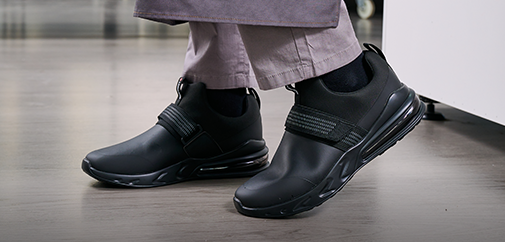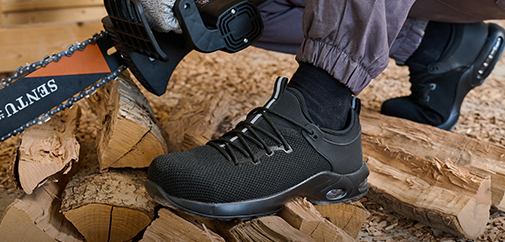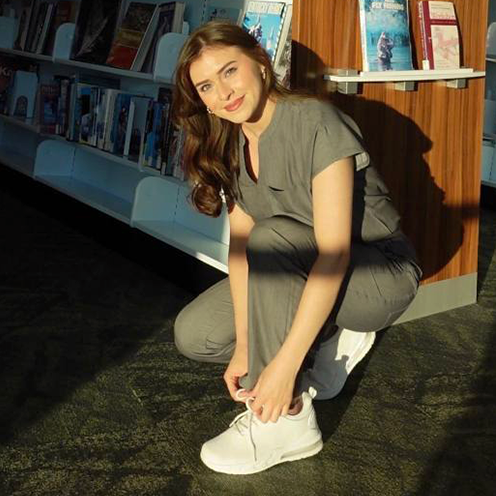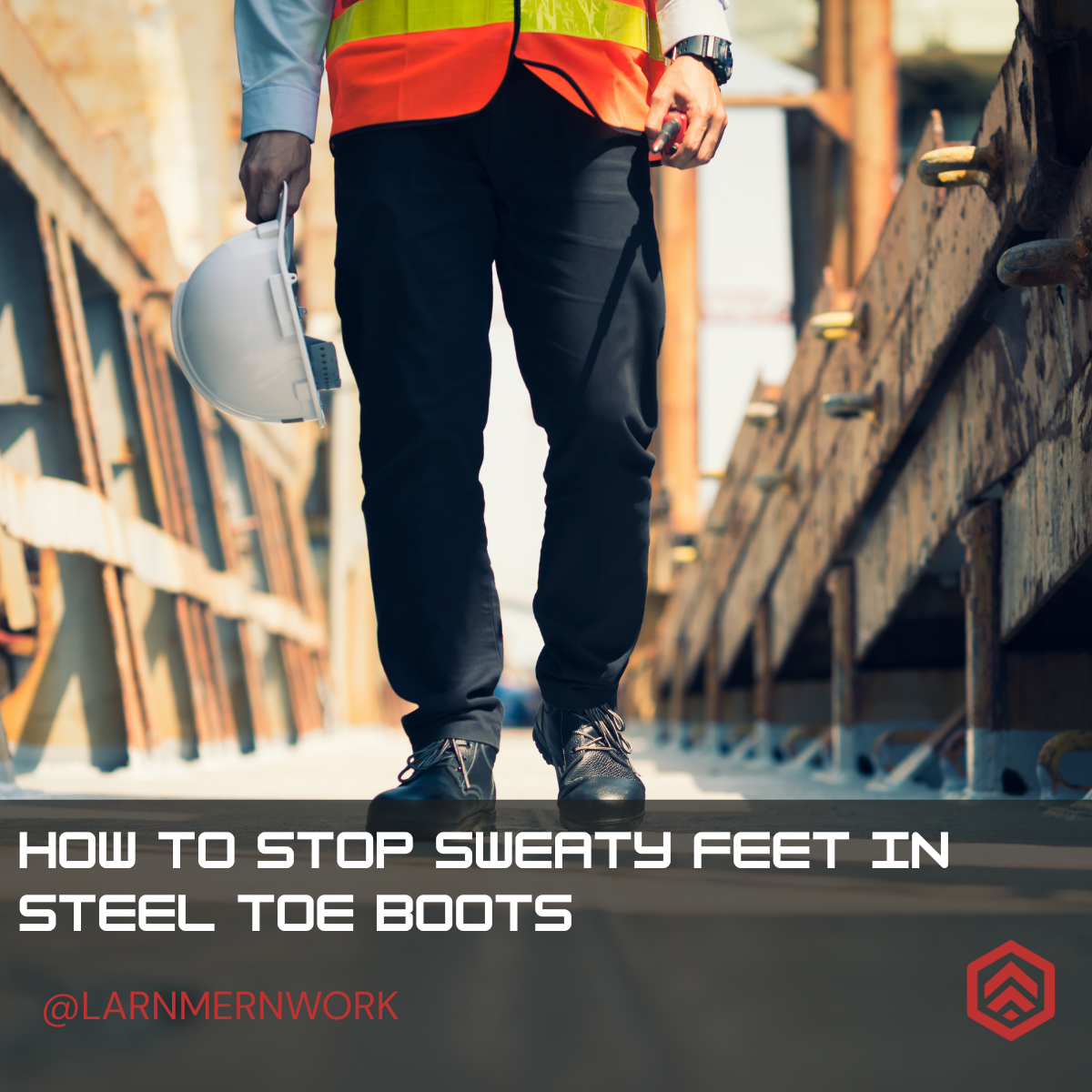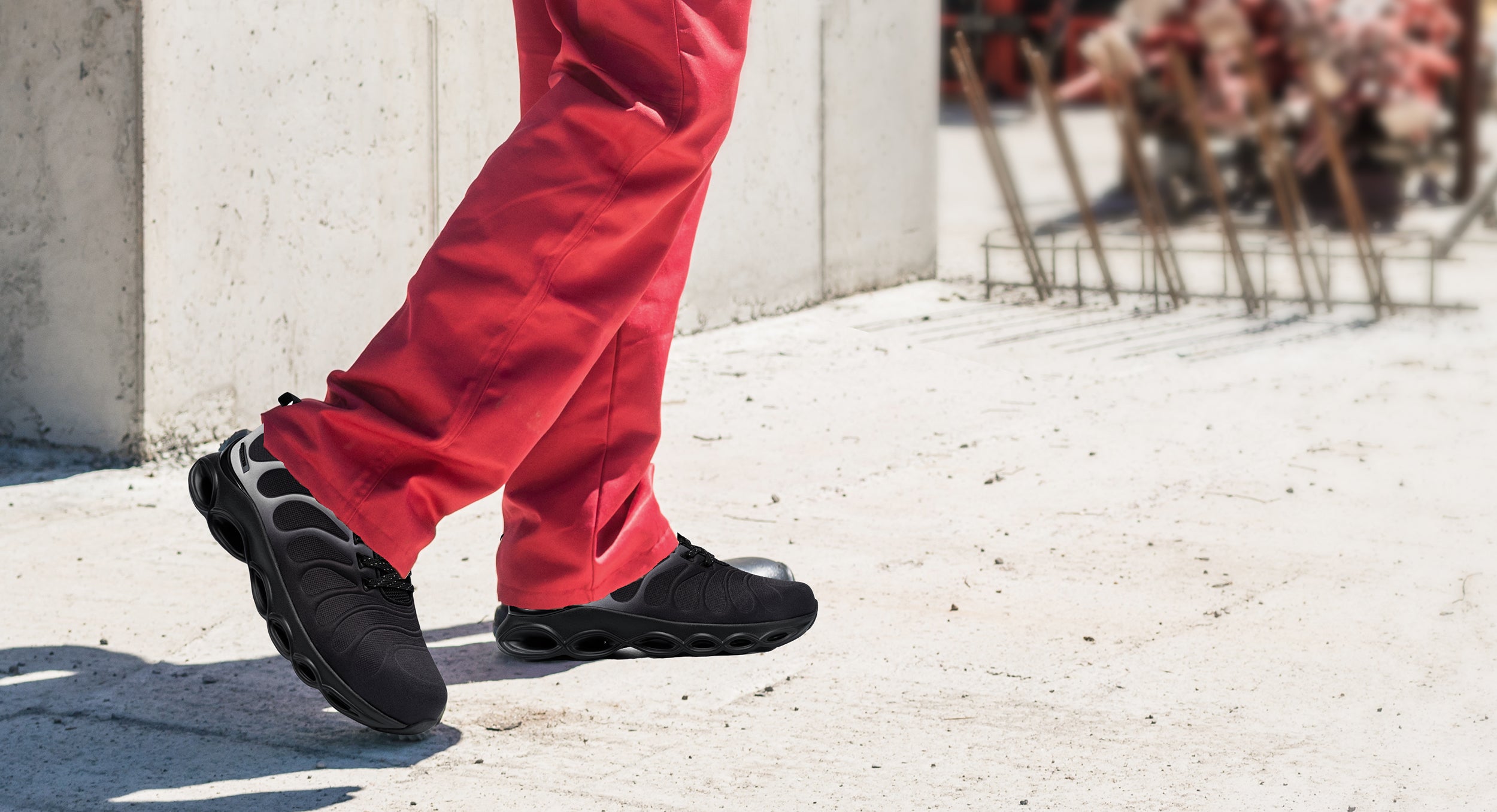There is more to steel toe shoes than just work gear. They can affect the health of your back in addition to shielding your feet from heavy objects and potential hazards at work.Many employees fail to recognize the link between their footwear and back pain, which can result in chronic problems.
Comfort and injury prevention can be greatly improved by selecting the appropriate steel toe shoes.
With years of experience in safety training and an understanding of working conditions, this guide will provide you with all the information you need to choose the best steel toe shoes for back pain relief.
You'll find useful advice here on how to choose lightweight options or comprehend the proper insoles. You deserve a pain-free workday, so continue reading!
Key Takeaways
- Back pain during long shifts is lessened by steel toe shoes with lightweight materials, arch support, and shock-absorbing midsoles.
- Wide toe boxes, and proper fit all contribute to better posture and balance when working.
- Slip-resistant soles help avoid falls that could cause injuries, including back pain.
- Regular shoe care, such as cleaning, insole replacement, and wear inspection, prolongs shoe life and safeguards your spine and feet.
- Along with choosing appropriate footwear, back health is also enhanced by healthy behaviors like regular stretching, safe lifting techniques, staying hydrated, and taking breaks.
Why Steel Toe Shoes Matter for Back Pain Relief
Long hours on hard floors can cause back pain, which can be reduced with the right steel-toe shoes. By maintaining your spine in alignment, cushioning and arch support lessen the strain on your lower back.Moisture-wicking materials help combat fatigue by keeping feet dry.
Steel toe caps provide impact protection, protecting your feet from heavy objects and preventing musculoskeletal injuries. Proper shoe size and lightweight midsoles reduce pressure on the knees and ankles, which influences the amount of force that goes up your spine.
Continue reading to discover the direct link between footwear and back health!

Understanding the Footwear-Back Pain Connection
Your footwear has a significant impact on your back health. Unnecessary strain on your lower limbs, feet, and spine is caused by poorly designed footwear. Over time, stiff materials or hard soles can exacerbate muscle strains.
This strain is lessened by steel toe shoes with cushioned uppers. Your foot remains stable when you walk or stand for extended periods of time at work if your heel fits snugly. This reduces the possibility of trips, slips, and falls that could cause back injuries.
Additionally, wearing heavy work shoes puts additional strain on your spine and legs. By reducing the weight you bear on hard surfaces throughout the day, lightweight safety footwear helps avoid fatigue. Every step is cushioned by shock-absorbing midsoles, which guard against impact-related sprains or aches brought on by repetitive motion when performing strenuous tasks like moving large objects or working on concrete floors.
Key Features of Safety Shoes That Relieve & Prevent Back Pain
Wearing shoes with steel toes can help manage your back pain. The ideal pair protects your body at work by balancing comfort and safety.

- Shock-absorbing midsoles: These reduce strain and fatigue during extended shifts by minimizing the impact of each step on your feet, lower legs, and spine.
- Supportive Insoles: Superior insoles with arch support reduce strain on soft tissues and lessen the risk of back strain from prolonged standing or walking.
- Lightweight Materials: Less foot fatigue and less strain on your lower back result from lighter shoes.
- Appropriate Toe Box Space: A roomy toe box keeps your toes from getting squeezed, keeps blisters at bay, and helps you balance better for a more even posture.
- Snug Heel Fit: This keeps your foot in place and stops slippage, which could lead to uneven steps or problems with spine alignment.
- Slip-Resistant Soles: These help you stay stable on slick surfaces and prevent falls that could injure your back or other parts of your body because of their well-designed tread.
- Moisture-Wicking Liners: Keeping sweat away helps prevent issues like athlete’s foot while maintaining overall foot health.
- Durable Protection Features: Safety toes like steel options safeguard against heavy objects without injuring nearby soft tissue.
Considering Handsfree Slip-In Safety Shoes: A Modern Solution

Handsfree slip in safety shoes that don't require your hands can ease foot pain and lessen back strain. These shoes are ideal for hectic days because they allow you to slide in quickly without bending over. Long shifts are more comfortable for your lower back because lightweight materials reduce foot fatigue.
While steel toe boxes provide protection from severe impacts on slick work sites. For prolonged use, a proper fit is essential to prevent rubbing or discomfort.
Beyond Footwear: Complementary Habits for Back Health
Protecting your back isn't just about good shoes. Small changes in daily habits can also help keep your back strong and pain-free.

- Stretch daily to loosen tight muscles. Focus on your lower back, legs, and core for better support.
- Use proper lifting techniques at work. Bend your knees, not your waist, and keep the load close to your body.
- Strengthen your core muscles with simple exercises like planks or bridges. A strong core supports your spine during tough tasks.
- Stay hydrated throughout the day to keep spinal discs healthy and flexible. Dehydration can lead to stiffness or discomfort.
- Take breaks during long shifts to prevent fatigue and muscle strain from staying in one position too long. Walk or stretch when possible.
- Sit correctly during breaks or desk work if required for paperwork or toolbox talks, keeping both feet flat on the floor.
- Check that equipment you use fits comfortably; poorly adjusted tools may lead to awkward posture over time.
- Avoid standing on hard floors without movement for hours if possible, as it can increase stress on joints despite wearing steel toes with great shock absorption.
Maintenance and Knowing When to Replace
Taking care of your steel toe shoes keeps your feet and back safe. Regular checks help you spot problems before they get worse.
- Clean your shoes after work to remove dirt and corrosive materials. This keeps the material strong and lasting longer.
- Inspect the shoe sole for wear or abrasion. Worn-out soles can cause pain and reduce workplace safety.
- Check the steel toe cap for cracks or damage. A broken cap may fail to protect against heavy objects.
- Replace insoles when cushioning wears out. Good insoles prevent foot strain, helping reduce back pain.
- Look for loose fits or discomfort during use. Shoes that don’t fit well won’t support your feet properly.
- Pay attention to lost support or cushioning in any part of the shoe. This can lead to stress on your human foot and back over time.
- Replace shoes if there’s visible wear or tear, especially in high-stress areas like heels and uppers made from thermoplastic urethane.
- Ensure proper cleaning routines weekly with mild soap, avoiding harsh chemicals that weaken materials.
- Rotate your footwear to allow each pair time to dry fully, reducing odor and preserving structure.
- Always follow OSHA guidelines for safety gear use at work, including knowing when it’s time for new steel toe shoes if required by employers during onboarding processes!
Conclusion: Step Towards a Pain-Free Workday
Steel toe shoes can protect your feet and ease back pain. Choosing the right pair improves comfort during long work hours. Look for features like proper support, good fit, and quality soles.
Pair them with healthy habits to keep your back strong. Start making smarter choices today for a better, pain-free workday!
FAQs
1. What features should I look for in steel toe shoes to help with back pain?
Look for steel toe shoes with orthotic insoles, proper arch support, and cushioned soles. These features can reduce strain on your back by improving posture and shock absorption.
2. Are loafers a good option for preventing back pain while working?
Yes, loafers designed with supportive materials and ergonomic design can be a great choice. Make sure they have slip-resistant soles and adequate cushioning.
3. How do megohms relate to choosing the right steel toe shoes?
Megohms measure electrical resistance in footwear. Shoes with proper resistance are important if you work in environments requiring protection from static electricity or shocks.
4. Can I find helpful tips about choosing these shoes in my inbox?
Yes, many brands send newsletters or guides straight to your inbox that explain how their products address issues like back pain or provide details on orthotic options.


